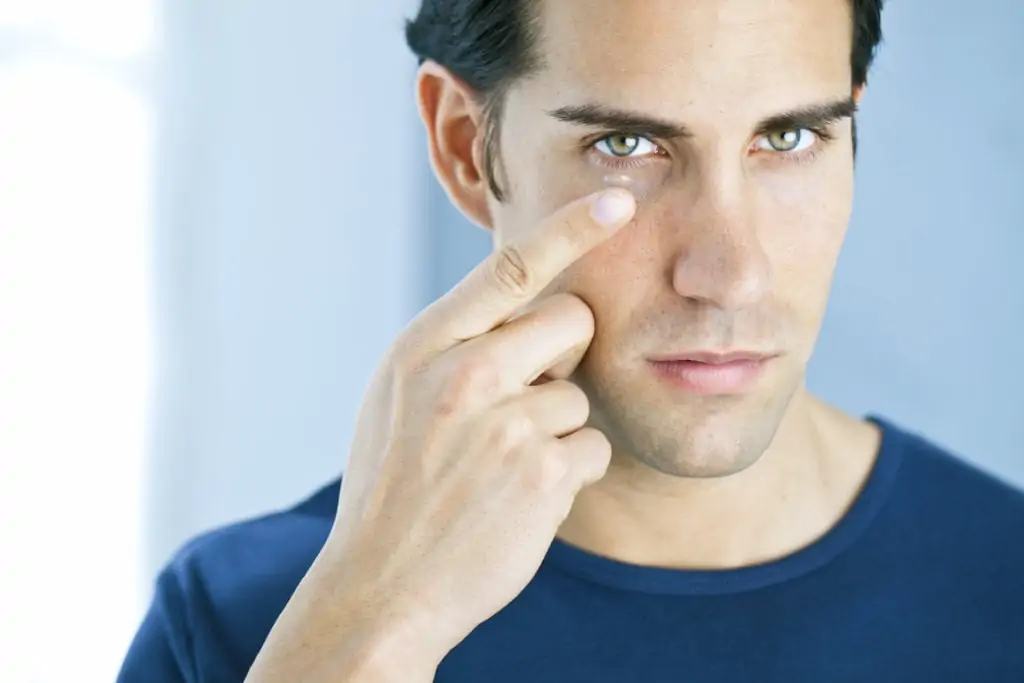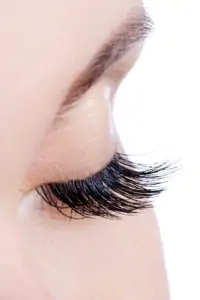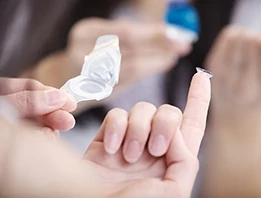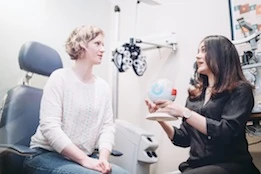Wear Contact Lenses? The Importance of Protecting Your Vision and Eye Health

Dr. Sheri Rowen of Vision Eye Centers is concerned that contact lenses, in particular the rise in popularity of daily disposables, have created a cavalier attitude toward lens care, leading to serious contact lens problems. She cautions, “The prevalence of risky behavior with contacts is massive and it comes with serious consequences for the health of the eye.”
The risky behavior that leads to contact lens problems should sound familiar to anyone who wears contacts. You touch them with unwashed fingers, you don’t clean your lenses as often or as thoroughly as you should. Thirty-day lenses get used for more like 60 days and even time wearing daily disposables gets stretched when you “accidentally” fall asleep in them and just wear them for a little bit longer than you are supposed to…like 48 hours. The CDC recently reported that nearly all contact lens users are guilty of violating at least one rule of proper contact lens care and wear.
Your eyes feel it when you haven’t been diligent. Sometimes, they become so irritated it can hurt to blink. And blinking, as it turns out, is very important to your eyes whether or not you wear contacts.
Contact Lenses: One-Stop In Your Vision Correction Journey
Once you are diagnosed with a vision problem, you are on a path to find the vision correction solution that works best for you. There is a life cycle to this journey as lifestyle and vision needs change with time and age. Typically, no matter what age the vision problem appears, everyone starts out in glasses. For many, particularly younger patients, the compromises of glasses in terms of looks and performance are simply not acceptable and they begin wearing contact lenses. Contact lens technology has improved tremendously over the past decade making them more convenient and, in many ways, creating the illusion that you don’t actually have difficulty seeing. The difficulty with that illusion is that it fosters the abusive behaviors that contribute to contact lens problems.
Your Eyes and Blinking

When you blink – really blink – the lid margins press together to activate tiny glands that release a lubricating substance. The act of blinking creates a biofilm of moisture that both helps to protect the surface of the eye (it is delicate) as well as increase the focusing ability of the eye by creating a more pristine, smoother surface through which light passes into the eye. But the biofilm evaporates, and we are required to blink properly and at an adequate rate to maintain it.
“I like to remind my patients about proper blinking technique. It is important to make sure the upper and lower lid margins come together completely,” continued Dr. Rowen. “Patients should experience a surge of moisture across their eyes, an indication the glands are working to properly lubricate the eye.”
But, we humans don’t blink like we used to. Staring for long periods at devices, televisions, and reading material reduces our blink rate…significantly. When we don’t blink properly, those tiny glands aren’t put to work and they get plugged up. Without the lubrication provided by the glands, the biofilm on the eye evaporates faster. So, the eye is no longer properly hydrated and, eventually, you start to feel it.
Signs of Contact Lens Problems
For many contact lens wearers, dry eye symptoms are simply an annoying, irritating compromise for the benefit of wearing contacts. The burning, stinging, and redness can become routine. But, what if there is more to it – more damage – than just your eyes feeling dry?
Without proper lubrication, your cornea – the surface of your eye – is more exposed, more vulnerable to the damage from the elements: pollution, pollen, sun, dust, bacteria to name a few. While dry eye symptoms may seem relatively harmless, in fact, it is a good indicator of what is known as ocular surface disease, a condition where the surface of the eye has been compromised and is not functioning properly.
Using contacts with ocular surface condition problems leads to…well, more problems. It puts pressure on you to make sure your lens care is hygienic to the point of being sterile because you are more prone to infection. But, as discussed, contact lens wearers are notorious for improper use. It is a bit of a vicious cycle and one of the primary reasons it is vital to keeping that annual eye appointment to ensure you are safe and healthy with contacts.
“We can’t express it strongly enough: we have to see you and examine your eyes frequently,” continued Dr. Rowen. “It is the only way we can keep you safe until you are ready to move on from corrective lenses with refractive surgery.”
Your Eyes Deserve A Break
The fact is, wearing contacts – even under the best of circumstances – is tough on the surface of your eye. Fortunately, there are other options. You could, in fact, go back to wearing glasses, but for contact lens users that often feels like a step backward on the vision correction journey. Moving away from corrective lenses leads to vision correction procedures. Most people with vision issues have some familiarity with LASIK, but only those who have taken the time to investigate and learn if they are a candidate for the laser vision correction procedure really understand its tremendous value; particularly after years in contact lenses. With the ability to treat a range of vision problems, including nearsightedness, farsightedness, and astigmatism, LASIK offers a permanent way to have excellent vision while eliminating the risks posed by extended use of contact lenses.
If you are struggling with contacts or contact lens problems, it is time to visit your doctor to evaluate the health of your eyes and address any ocular surface conditions. Recent studies have shown patients who chose LASIK have a reduced incidence of dry eye symptoms. This may be due to the diagnosis and treatment of underlying, pre-existing ocular surface disease prior to the procedure and that having LASIK gave eyes the break they deserved from contact lenses.
With today’s advanced technologies and treatment profiles delivering excellent vision in safety, there has never been a better time to take the next step in the vision correction journey and have LASIK. If you are ready to move on from contacts and glasses, now is the time to talk to your ophthalmologist.




